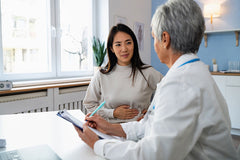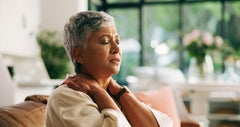My awakening to adulthood was rather rude. A week after I turned 30, I found a lump in my right armpit. I didn’t think too much about it. I had just returned from a diving trip with my partner, and had hurt my right leg. I was anxious to figure out why my leg pain hadn’t receded.
I had an appointment scheduled with a primary care doctor to get my leg checked out. In that appointment, I briefly mentioned the lump in my armpit to him. His response, “you are too young, no family risk factors, so I wouldn’t worry about it.” However, for my leg pain, he wanted me to get an emergency scan! He was worried that I might have a blood clot. He asked me to cancel my day and get an ultrasound immediately. As an afterthought, he said, “Well, since you are getting an ultrasound, you can just have them ultrasound your armpit. It’s not necessary, but just in case you want peace of mind.” I responded, “No, if you don’t think it’s necessary, no point spending the money.”
I sat in the waiting room for a few hours waiting to get the emergency leg ultrasound. I had to cancel my workday. I was annoyed. I needed to be at work. Frustrated, I remember thinking, “hmm, if I need to come back and get the armpit ultrasounded, I really don’t want to have to waste more hours in the waiting room.” I asked the technician if she would do it.
That’s where it all started. That scan. After that scan there would be many many more. There will be many, many more in my lifetime. What if I had not asked the technician to do that scan?
It’s only now, 2 years and counting, that I have realized just how common my story is. The story of a young woman, where sheer luck of discovery drives a cancer diagnosis. Some women get dismissed. Others are forgotten. Others, like me, get lucky. (Yes – lucky. We’ll unpack that one later.) Guidelines don’t recommend screening for women under 50, unless you have a known family history.
The story of the AYA (adolescent and young adult) cancer survivor is becoming all too common. A study published in JAMA Network Open found that the rate of cancer in adolescents and young adults increased by nearly 30% from 1973 to 2015.
I’ll leave you for now with the following question — how might we increase cancer screening for the AYA community?
If you have thoughts, please comment and respond to this thread. Our goal is to generate a dialogue and bring together the world’s experts to help create tools, resources and education, making the cancer experience just a little easier.





